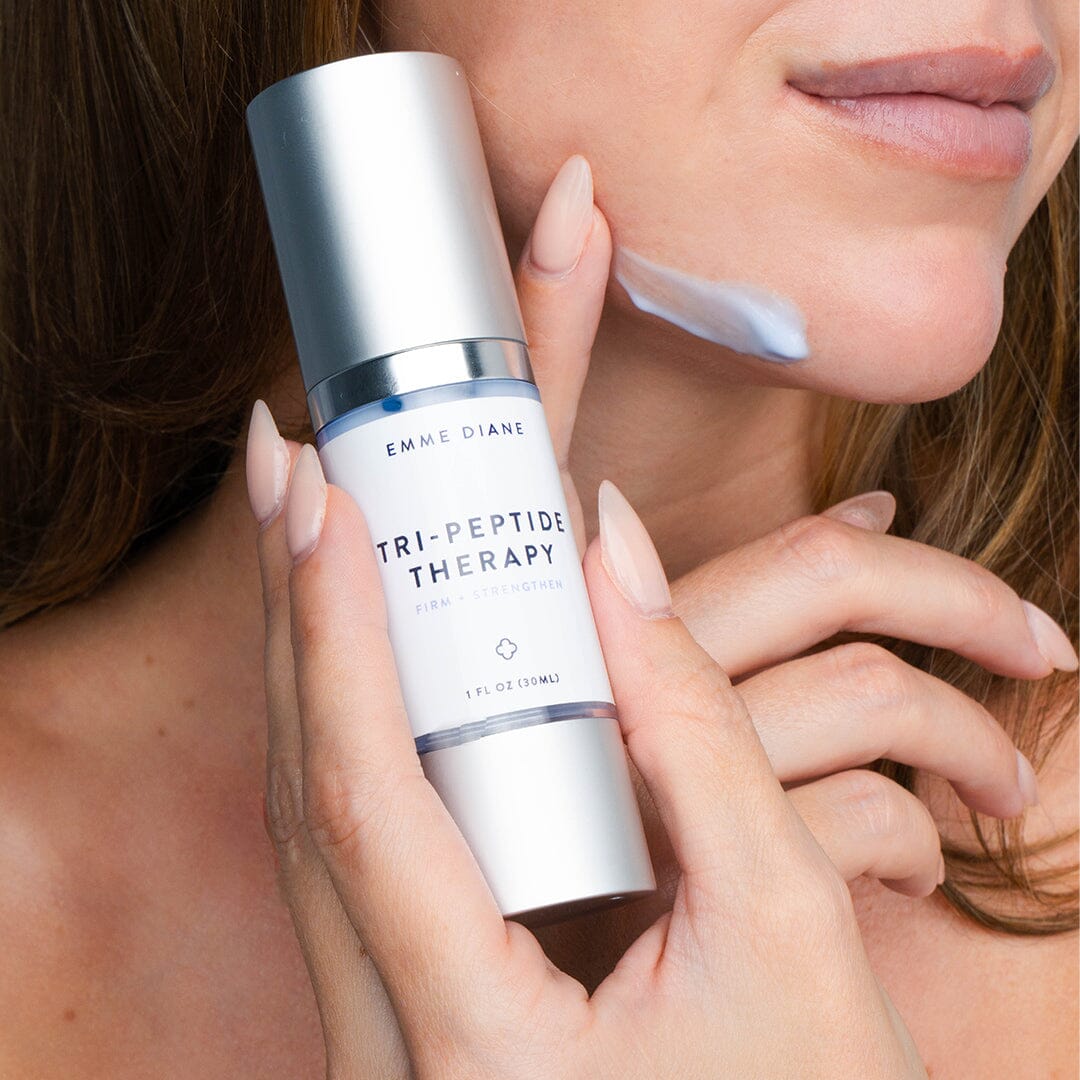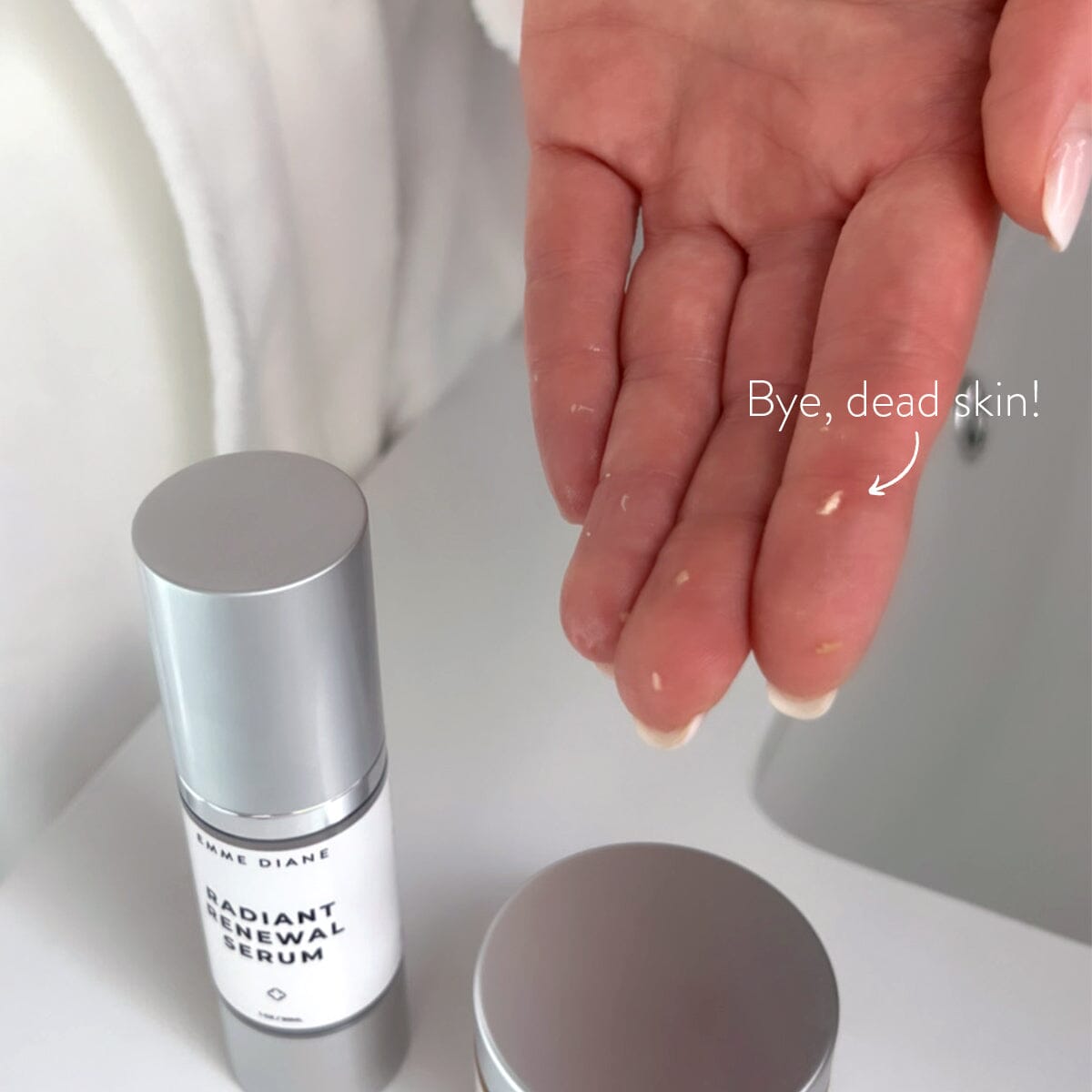What You Should Know About "Skin Cycling" (& Alternatives That Might Work Better For You)
by Emily Linehan on December 12, 2022
If you’re interested in skincare you’ve likely heard of “Skin Cycling”. Although it’s recently gained popularity online, it’s actually a method that skincare professionals have been using for quite some time! Let’s dive into more about what it is, and why it might not be the right method for your skin.
What is Skin Cycling?
If you aren’t already familiar, the concept is pretty simple: skin cycling is a four-night skincare routine that alternates between active products and recovery nights.
On night one you would exfoliate with an acid; on night two you would apply retinol; then nights three and four would be the “recovery” nights, where you only apply moisturizer to allow the skin to rehydrate and repair.
If you’re an existing client of mine, this might sound very familiar to you. That’s because the process of “skin cycling” is very similar to how we acclimate the skin to your serums and treatments to avoid excessive dryness or irritation. So, to be honest, skin cycling isn’t exactly a “new” method because skincare professionals have been using this type of technique for a long time… it just finally got a cute name and it’s time in the spotlight online!
Is Skin Cycling Right For You?
Something important to consider is that skin cycling, like most skincare techniques and trends, is not one-size-fits-all. It can be great for those with very sensitive or non-acne-prone skin types as it can help the skin acclimate to new active ingredients while minimizing any dryness or irritation.
However, if you have an active concern like anti-aging, pigmentation, or acne, it may not be the best option for your skin.
For those that are struggling with acne-prone skin, consistency is key to successfully getting clear and staying clear. This is because those of us that are acne prone have a genetic predisposition for our skin to misbehave. For one, acne-prone skin sheds more skin cells a day than normal skin, which is a factor that can contribute to clogged pores that turn into breakouts.
If we are inconsistent with exfoliating, those dead skin cells will accumulate down in the pores, resulting in more blockages and new breakouts. So, by exfoliating daily, we are essentially training our skin to act more like normal skin.
Now, this doesn’t mean a harsh daily exfoliation at all…in fact, I prefer acids that are typically a bit gentler than the skin cycling recommendation of glycolic acid. By using gentler acids like mandelic acid, lactic acid, and salicylic acid, daily exfoliation is not a problem and can be tolerated by even the most sensitive skin types, including those with rosacea.
Something else that is important to consider is how quickly you’d like to see results. If you’re taking your skincare routine seriously, you’re likely looking to make visible changes to the skin. While you can still produce results with the skin cycling method, it will ultimately take more time.
This is because to get the intended results, most skincare products (with the exceptions of certain outliers, such as masks), are formulated, tested, and approved for daily use. So, if you are only using your retinol twice a week, you won’t see as much change to your skin as you would if you were using it daily. For example, this would be like taking Omega 3 Fish Oil twice a week expecting to receive the same benefits as taking it daily.
All that being said, that doesn’t mean you should rush into a relationship with a new active ingredient. Instead, when introducing a new active product into your routine, you should slowly acclimate your skin to it, which is when a form of skin cycling can be beneficial!
Instead of “skin cycling”, I like to call this the “acclimation” phase, because as the name implies, it is only a phase. During this period, I recommend that my clients start by using their active serum or treatment once every 3rd night for the first two weeks, then they can increase to using it every other night for 2 weeks, and eventually begin applying the product nightly as the skin tolerates.
To give you a better understanding, here is a schedule for reference:
| Weeks 1 & 2 | Apply every 3rd night |
|---|---|
| Weeks 3 & 4 | Apply every other night |
| Weeks 5+ | Apply nightly as skin tolerates |
Alternative Methods
If you have extremely dry or sensitive skin, there are two alternative methods that I recommend. These methods are perfect for avoiding dryness or irritation, while still allowing you to use your active treatments nightly, just in a modified way!
The Timed Method
To do this, for the first few nights after cleansing you will apply your treatment serum (such as retinol) and allow it to sit on the skin for about 15 minutes, then cleanse it off and finish with the rest of your skincare routine. You can then increase the amount of time the product sits on your skin in 15-minute increments as tolerated. Once you’re able to leave the active ingredient on the skin for 1 hour, you can then try leaving it on overnight.
For my acne clients, this method can also be used with your Acne Eraser at night if the skin is feeling dry!
The Buffered Method
The buffered method is another great option that works especially well for dry or sensitive skin types. This method involves mixing a small amount of your active ingredient with your moisturizer to acclimate the skin slower. This way, the moisturizer is buffering the strength of the serum, but you will still get the cumulative nightly benefits.
To do this, mix a small amount of your active ingredient with your moisturizer and apply it to the face, then continue with the rest of your skincare routine. If tolerated, you can leave the product on all night. However, if sensitivity occurs, try using the timed method discussed above.
Closing Thoughts
Keep in mind that although many active ingredients can produce great results, they can also be drying, so it’s vital to have a skincare routine with powerful humectants and moisturizers.
If you are using an acid or retinol, you should still be moisturizing your skin after applying the serum or treatment. I recommend waiting 2-3 minutes after applying an acid or retinol before applying your moisturizer, however, ultimately giving the skin hydration is essential when using these types of products.
As with everything in skincare, there are no one-size-fits-all routines, so be sure to listen to your skin and adjust accordingly. If you're new here, I highly recommend you take the guesswork out of skincare by starting with my free online consultation. Not only will I provide product recommendations to help you meet your skin goals, but you’ll also receive step-by-step instructions on how to use your products and advice about lifestyle habits that may be worsening your skin concern.
Or, if you’re an existing client interested in incorporating a new product into your routine, be sure to check in with me so that we can update your routine as needed!
xoxo, Emme


